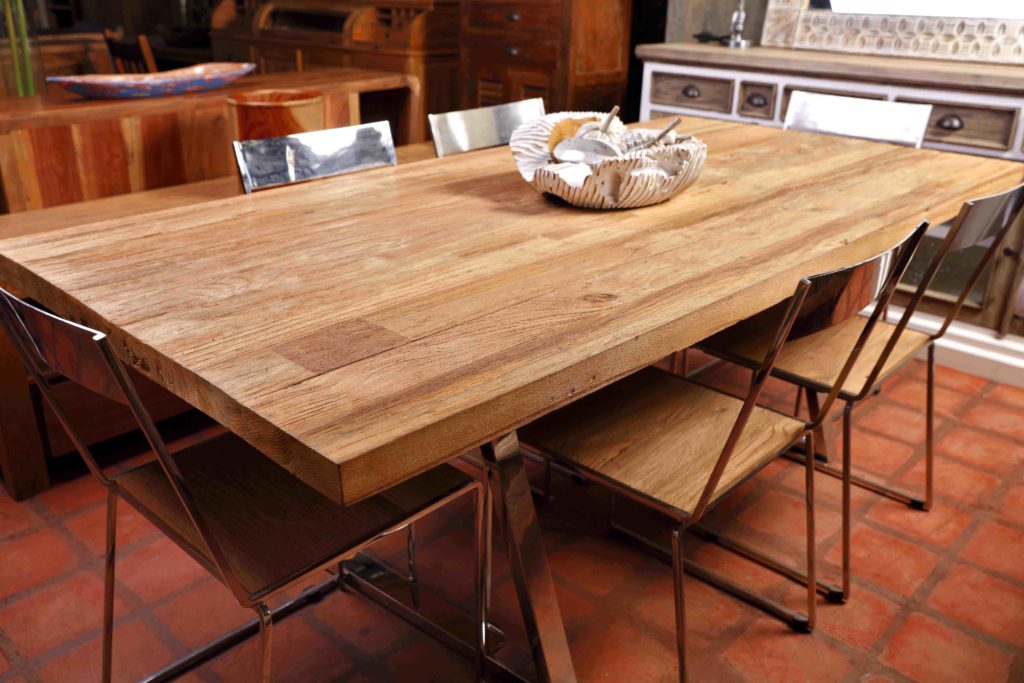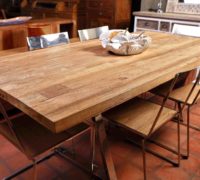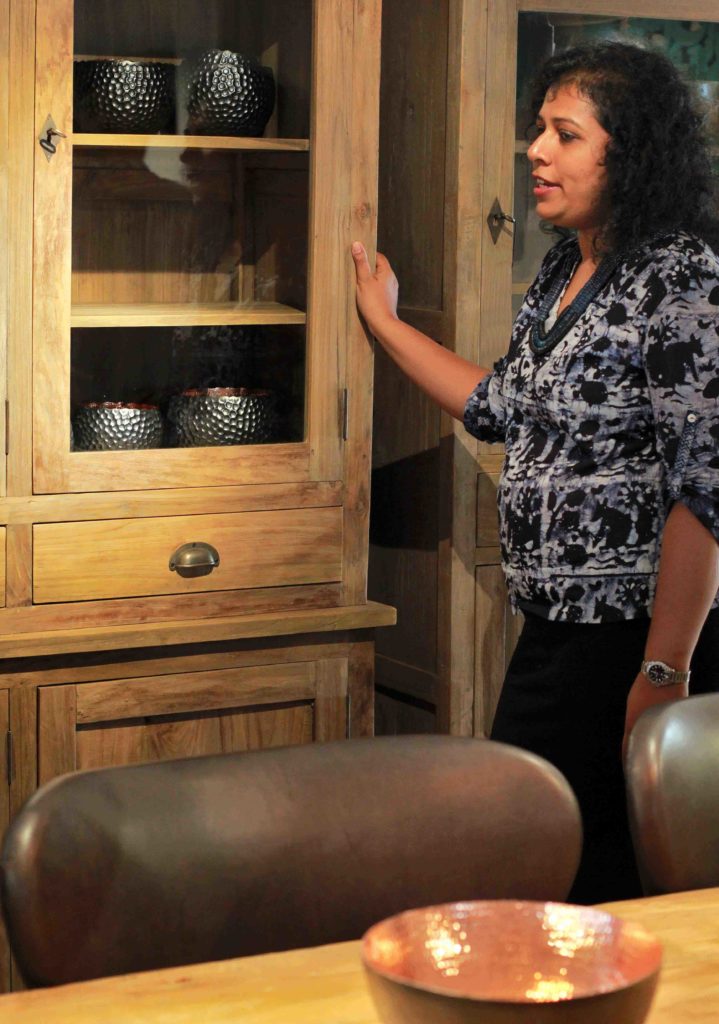
With real estate in Colombo steadily rising in value, contemporary homes are becoming smaller and professional advice on how to enhance a space proves valuable and cost-effective for homeowners. During a visit to the picturesque Meubel House gallery on Gower Street, Architect Suzette Whehella shares her tips for making the best out of every space and a few guiding principles for choosing the right furniture.
Architect Whehella grew up amid spaces and design metrics – her father was an engineer and since she was six years old, she aspired to create living spaces. She studied architecture at the City School of Architecture and branched out on her own with Suzette Whehella Associates. Architect Whehella prefers to focus on a few projects at a time; this has allowed her to dabble in sub-disciplines close to her own work-for example interior design, which she started experimenting with when she realized how a beautifully designed space could be furnished and accessorized to make it truly extraordinary.
When she meets with clients Whehella tries to find out what makes them tick. “Interiors are about character,” she says. “It has to reflect the little quirks and interests of the person living in the house.” It can be challenging to keep your own preferences out of it, she laughs. “You have to remember that this is where someone else will be living and that it needs to be about their likes and dislikes.” Her advice is to consult with an architect first if you’re doing the interiors for your own house, as they will have a good idea of what the space requires.
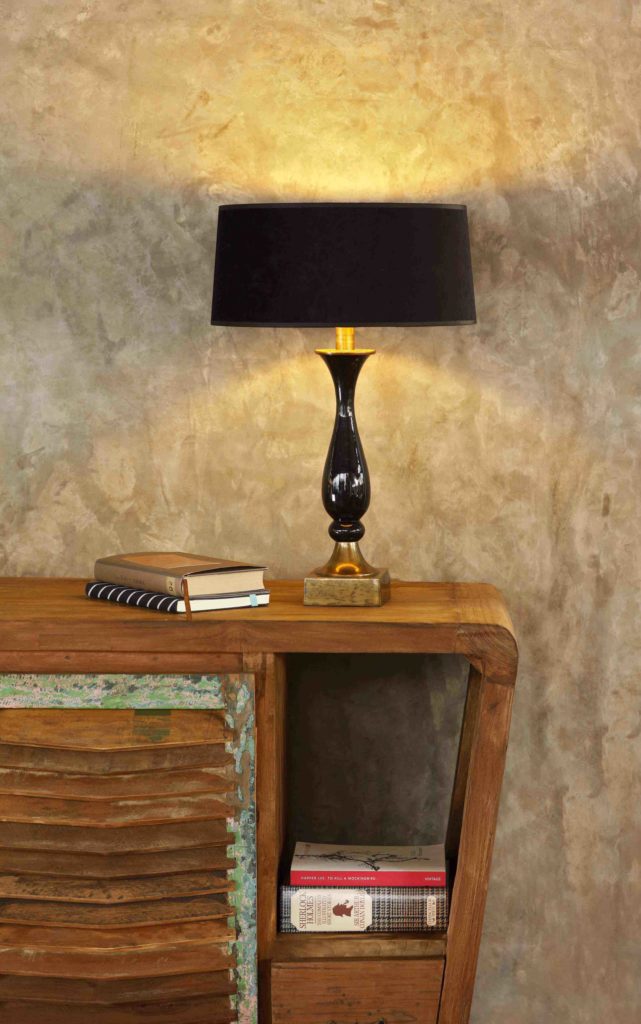
To begin with, a house with open areas and natural light is instantly easier to work with. If natural light is difficult to tap into, Whehella advises strategically placing lamps and lights for good lighting indoors. Then, you could choose the furniture and other accessories to individualize your space.
When choosing furniture, remember that size matters. A larger space can handle large furniture while it is always advisable to choose smaller pieces for a smaller space. It may sound self-evident but many homeowners give in to the temptation of buying a large pettagama, or wooden chest, for their tiny living room. To be comfortable, you need as much space as possible to walk around, says Whehella.
Use quirky, unusual versions of the most traditional items of furniture. You could also use unusual colours to brighten up a solid colour scheme-for example a room painted in white and filled with white or light-coloured furniture will instantly take to multi-coloured chests. Whehella suggests using it in a TV room or living room, but recommends that you pair it with an otherwise muted colour scheme. “As a rule of thumb, we say no more than three colours. Beyond that it gets to be too much. I would also follow this rule when you’re painting indoor spaces – for walls, less is more.”
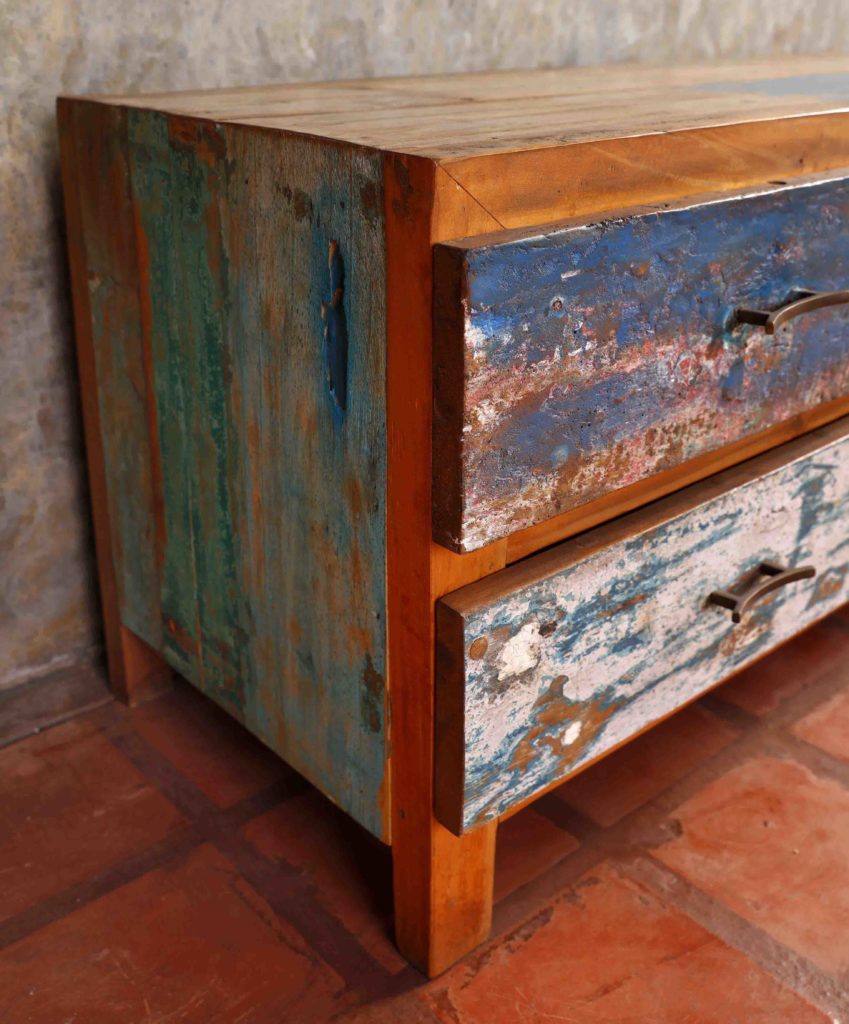
Mix and match shapes and textures, but with restraint. Thinking in height and width dimensions can also help you find visual balance in a space. A strategically placed mirror can also add a touch of elegance to a larger space, or create the illusion of space in a smaller room.
The day bed which was made entirely of reclaimed wood from a boat, is an example of a statement piece that can dress up a large space or add excitement to an outdoor area. Whehella recommends using primarily wood in outdoor spaces – just make sure you maintain it well – or rattan, a naturally renewable material favoured by many Sri Lankan households. If you must have metal, use galvanized wrought iron for a rustic look to add character to a space.
Whehella shares that interior design is often about instinct tempered with insight – perhaps from a professional, but experience can also help. Instinct will help you bring a strong sense of character to a room, while knowing what goes where, and how, will help you make that space truly home. At Meubel House you’ll find a bit of both – guidance to help you find the right fit for your home, and respect for character in a space via customized furniture.
